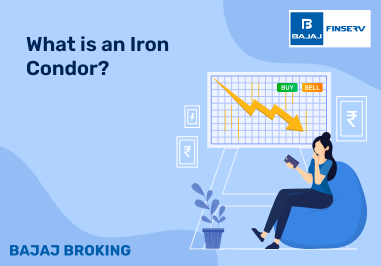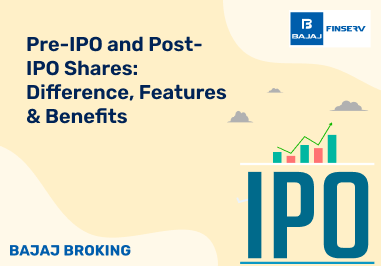NIFTY MIDCAP INDEX
NIFTY midcap is a list of dynamic mid-sized companies that have the potential to become future leaders! When it comes to investing in companies that offer substantial growth potential and also stability, NIFTY midcap comes as a rescue. For many investors, NIFTY midcap plays a crucial role in diversifying their portfolio and risk management. NIFTY Midcap 50 stocks are some of the most popular choices! Other than this, the NSE (National Stock Exchange) also presents NIFTY midcap 100 and 150 indexes.
Various NIFTY midcap companies often surpass their category soon and enter the large-cap segment. With balanced growth and stability, midcap companies can become leaders in the stock market! Since this index catches the attention of many, be it business tycoons or a beginner in the stock market, you too must not miss out on it! Check out why NIFTY midcaps remain the talk of the stock market!
Understanding NIFTY Midcap 50
NIFTY is the benchmark presented by the National Stock Exchange. It includes companies of various sizes and Nifty midcap includes mid-sized companies listed with the NSE.
Among different indexes, NIFTY midcap 50 companies attract many investors. AU Small Finance and Ashok Leyland Ltd., are some of the common names in this list. The categorisation is done primarily on the basis of the market capitalization of a company. Let's dive deeper to learn more about NIFTY midcap stocks.
NIFTY midcap 50 stocks simply refer to the top 50 mid-sized companies listed on the National Stock Exchange. These are the topmost mid-sized companies that offer both high potential growth and stability. Thus, investors and traders often look to this index to maximise profit and balance their portfolios!
Companies ruling this index of NIFTY include names like IDFC First Bank, MRF Ltd., Trent Ltd., Max Healthcare Institute, Aditya Birla Fashion & Retail, Page Industries, and more.
NIFTY midcap 50 companies are carefully shortlisted and presented by the NSE. The selection criteria include certain conditions and listed companies must fulfill these conditions in order to be a part of the index.
To be eligible for the NIFTY 50 midcap index, a company has to be a part of the NIFTY midcap 150. From this list, the top 50 companies are chosen. The criteria for these top 50 companies are market capitalisation, trade volume, and impact cost. This means, a company not only has to fulfill the market cap requirement but it must also be actively traded to be a part of NIFTY midcap 50 stocks.
Exploring NIFTY Midcap 100
NIFTY midcap 100 index covers the top 100 mid-sized companies listed on the National Stock Exchange. These give a broader view of the midcap companies than NIFTY midcap 50 companies. The stocks listed in this index can play a crucial role in portfolio expansion and diversification.
Some of the common names in this index include Godrej Properties, HDFCAMC, Voltas Ltd, Bharat Heavy Electricals, Aurobindo Pharma, and more.
The companies shortlisted under NIFTY midcap 100 include companies that are active and have a high price impact. The National Stock Exchange of India carefully shortlists this index. Primary criteria take into account the market capitalisation of a company, trade volume, and the price impact on the stock market. Based on the liquidity and value of the stocks, companies are shortlisted. It makes the task easier for traders and investors.
Insights into NIFTY Midcap 150
Last but not least, NIFTY midcap 150 enlists the top 150 high-performing mid-sized companies listed on the National Stock Exchange. These are the companies that have a market capitalization higher than small-cap companies but less than large-cap companies. Every year, several companies make their way into the midcap from the small-cap list and several cross the list to enter the large-cap index.
Some of the companies in this list are Bank of India, J K Cements, NHPC Ltd., SunTV Network, ZEEL, etc.
NSE pays utmost attention to ensure the top 150 midcap companies are carefully chosen. These are the companies with high growth potential and significant stability. The accuracy lies in the selection criteria. Average daily turnover, trading volume, market capitalisation, and cost impact are some of the criteria taken into account. This robust index allows investors and traders to refer to NIFTY midcap 150 as a reliable index.
Comparing NIFTY Midcap 50, Midcap 100, and Midcap 150
Comparing different NIFTY midcap indexes helps you make informed decisions. Whether you are a trader or an investor, understanding the differences between different indexes of NIFTY midcap can be crucial. There are three factors that primarily differentiate various indexes of NIFTY midcap. These are:
How easily a stock can be bought or sold in the share market decides its liquidity. Stocks that are easy to trade are of high liquidity and vice-versa.
NIFTY midcap 50 companies offer higher liquidity than NIFTY midcap 100 shares that have moderate liquidity. NIFTY 150 list offers lower liquidity compared to the top 50 and 100 midcap companies.
Market capitalisation refers to the total value of the outstanding shares of a company multiplied by the stock price. In terms of market cap, NIFTY midcap 50 companies have a market cap ranging from 1-50, NIFTY midcap 100 ranges from 101-200, and tIFTY midcap 150 ranges between 101-250.
The volatility of a company depends on its market cap, market constituents, etc. Companies with high volatility are risky. NIFTY midcap 50 shares have the highest volatility in comparison to midcap 100 and 150. Midcap 100 has moderate volatility while Midcap 150 offers the lowest volatility due to the broader list.
Why should you invest in Midcap stocks?
Midcap stocks are in high demand due to various reasons. The top two reasons why you may choose to invest in NIFTY midcap stocks are:
Companies listed in NIFTY midcap are the ones that have high growth potential. Since they are in their growing phase with are quite stable, the chances of profit-making are high.
Midcap companies offer growth and stability. This is one of the striking reasons why they are capable of diversifying your portfolio. You can mitigate the risks of highly volatile stocks in your portfolio with midcap stocks. So, it can be a smart choice to include midcap companies in your investment target.
Conclusion
NIFTY midcap companies let you think beyond large caps and small caps. By Investing in NIFTY midcap, you not only get to invest in high-potential companies but also bring diversification and stability to your investment portfolio. Explore various indices of NIFTY midcap like 50, 100, and 150 to learn about different companies and their performance so you can make an informed investment.
Disclaimer: Investments in the securities market are subject to market risk, read all related documents carefully before investing.
This content is for educational purposes only. Securities quoted are exemplary and not recommendatory.
For All Disclaimers Click Here: https://bit.ly/3Tcsfuc















